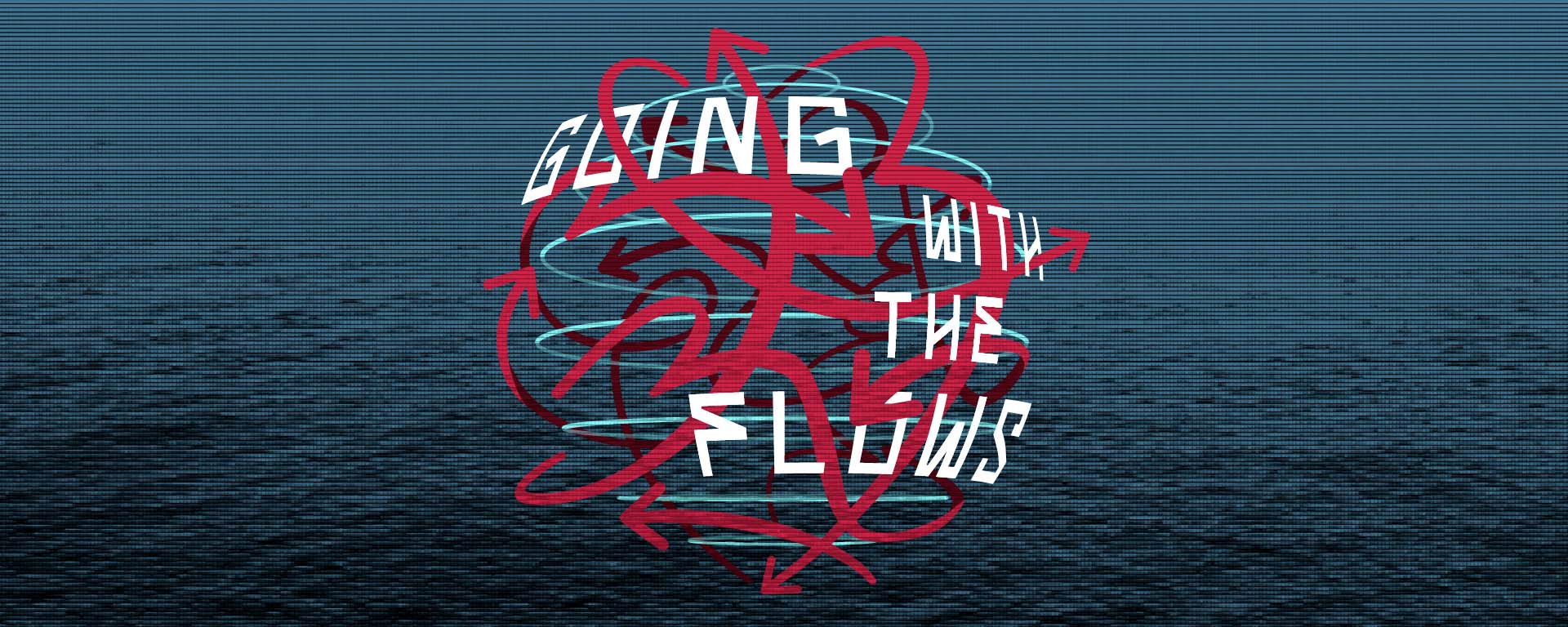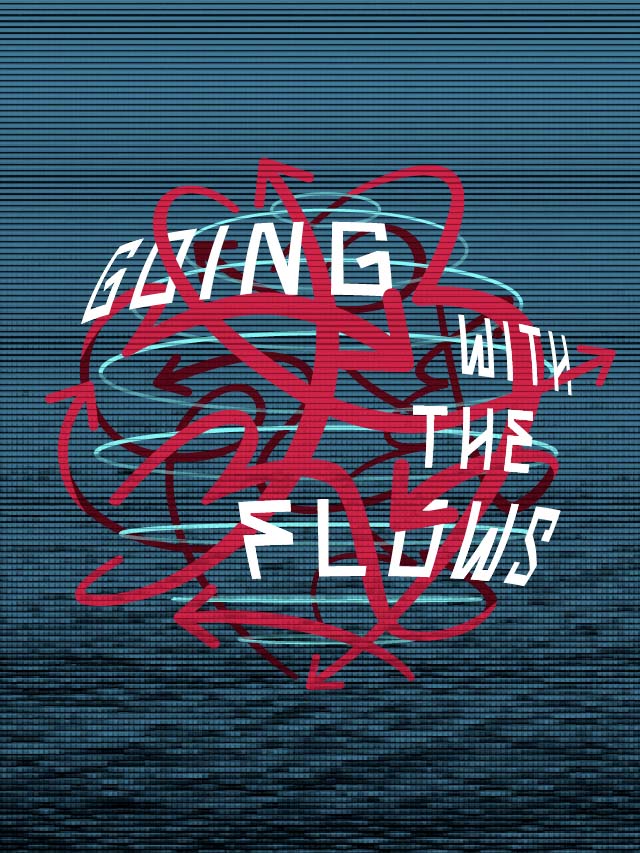Going with the Flows
Lonely Vectors brings attention to the global system of logistics and economic flows that support – and divide – the world we live in today. Curators Joella Qiu, Kenneth Tan and Mi You tell us more about how Singapore’s history as a port city and the desire to reconnect with fellow artists after the pandemic have inspired the exhibition.
How did the idea for this exhibition first come about?
As SAM was preparing to move into its new space in Tanjong Pagar Distripark in 2020, we wanted to reflect on the site and its history. It dawned upon us too, of course, that 2022 would mark the 50th anniversary of Tanjong Pagar Port’s containerisation. This process was particularly crucial in Singapore’s integration into a global system of logistics and economic flows. But we wanted to go beyond acknowledging this relationship and the flows of goods. Instead, the curatorial team wanted to point to the uneven distribution of information, labour and land happening around the world — even as we are using the port here as a point of departure.
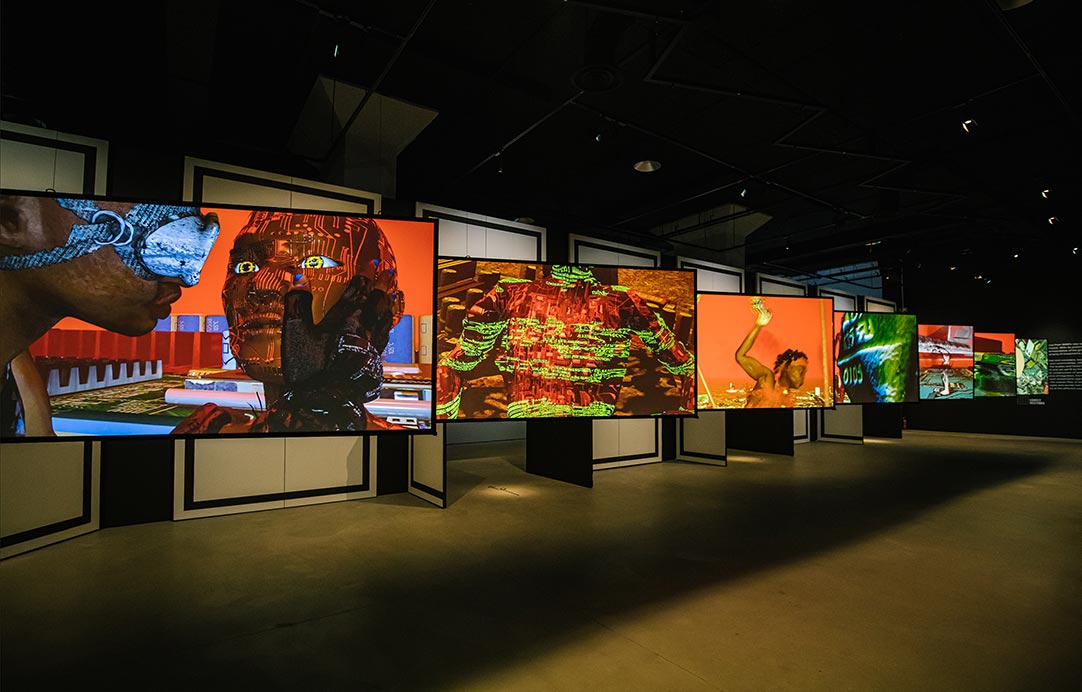
A series of science-fiction scenarios in Shu Lea Cheang’s UKI VIRUS SURGING focuses on the bodies’ cellular ability to evolve and a society’s ability to create new worlds.
In many ways, the ongoing COVID-19 pandemic also influenced our thinking about how the virus was evolving, making its way around the world, and becoming very much an economic vector of its own. But the heart of the show lies in the word “lonely” as well, which describes a desire to connect again after a long period of social distancing. Making an exhibition thus gave us a reason to create a space where artworks, ideas and people could gather again.
Why draw attention to the “movement of goods, information and labour across the world” today? How might the exhibition’s artworks shed new light on this everyday phenomenon that has almost been taken for granted?
As we considered our position within Tanjong Pagar Distripark and our proximity to the port, we began brainstorming for terms that encapsulated the site’s various associations. In the process of doing so, words such as “flows” and “smooth” came to mind.
The artworks within Lonely Vectors are permutations around a central question – for whom, or what, does the current globalised world order work for?
We worked with artists who were interested in how our conception of a frictionless global surface might measure up to the lived reality of various communities and entities. Through the works on display, we were able to proffer responses that move between the micro, meso or even micro scales.
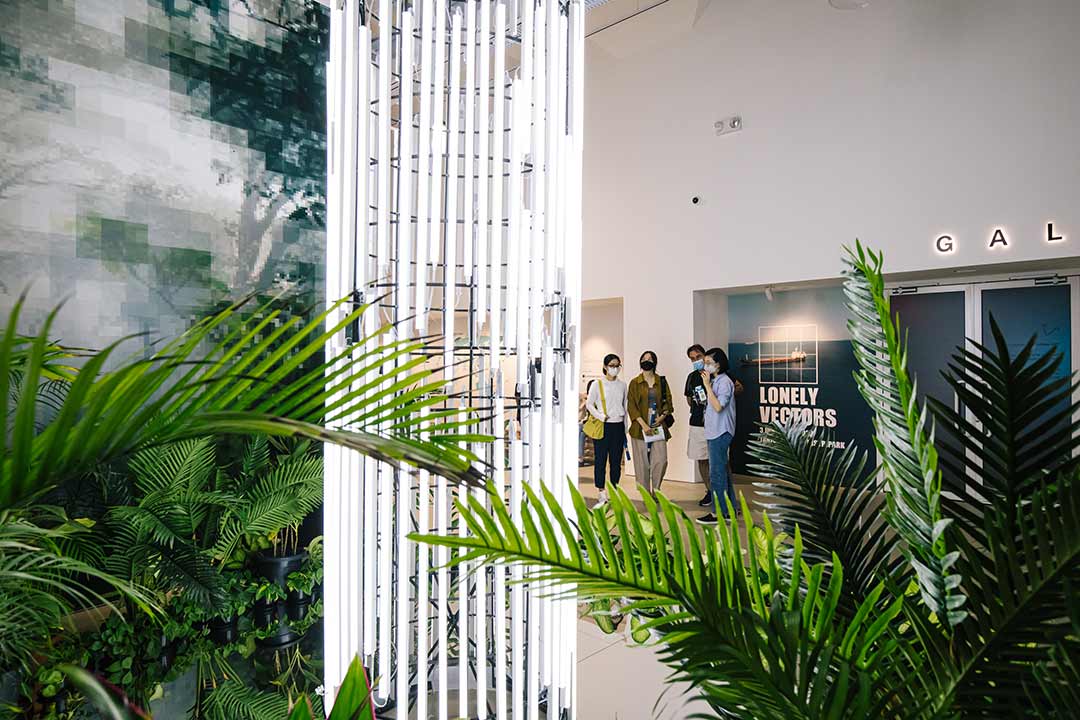
Fountain of Interiors by Bo Wang centres on the lived realties of migrant labourers in Singapore.
The “loneliness” implied in the exhibition title is more to do with how each one of us is called into this global economy — as homo economicus, and thus always assumed to be an individual trying to maximise his or her life through a rational self-interest.
To be connected, to flow with the waves of the global economy, is in that sense to become a “lonely vector”
What, then, would it mean to be at a scene where “lonely vectors” are assembled (in the case of artworks) or are in the process of gathering (in the case of audiences)?
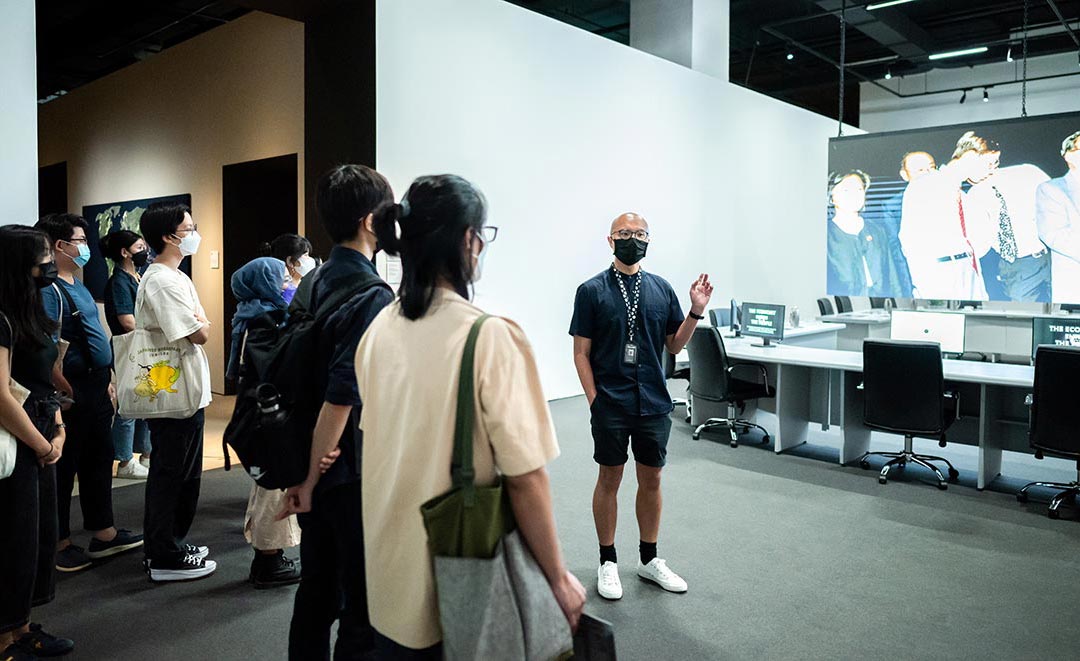
Curator Kenneth Tay taking visitors on a tour of Ho Rui An’s The Economy Enters the People (2021–2022), which reflects on Singapore’s role in China’s economic transition.
As a guest curator based overseas, can Mi You reflect on how the way you worked remotely for this exhibition to reflect its exploration of flows and the global economy?
The business model of a global art world where the elites jet set around the world has been subject to critique for a while. From the art world, we can get a glimpse of the global economy, but we can also rethink the question of economy. The pandemic forced many to slow down, and more importantly, it afforded reflections on how to make art meaningful for extended communities as seen in works such as Chu Hao Pei’s Seeding Sovereignty that provides an alternative mode of distributing rice seeds.
It also helped us to consider the importance of creating lasting connections between the global and the local. For instance, it led to the formation of reading groups, a series of closed-door programmes we held leading up to the exhibition opening. Each was hosted by a presenting artist who decided how to use the programme as safe spaces to test out ideas they were hoping to present in Lonely Vectors.
Lonely Vectors has a series of three presentations and is described as a multi-site exhibition in Singapore. How would you recommend visitors to experience Lonely Vectors in its entirety? What is the relation of the presentations to one another and the takeaway you want audiences to have from seeing all three presentations together?
Lonely Vectors stretches across three key sites — the hoardings across SAM’s heritage buildings on Bras Basah Road and Queen Street (currently closed for redevelopment), selected public library locations and at our new museum space in Tanjong Pagar Distripark. Audiences are free to visit the sites in any order they like, and to delineate a path through the exhibition’s space(s) on their own terms.
With Lonely Vectors, our interest was not in thinking about the singular or monolithic trajectory– but of lines that divert, deflect or diffuse.
The Lonely Vectors exhibition runs across the Tanjong Pagar Distripark (3 June–4 September 2022), local libraries (27 July–11 September 2022) and the public hoardings (19 February–28 August 2022) on SAM’s building on Bras Basah and Queen Street.

